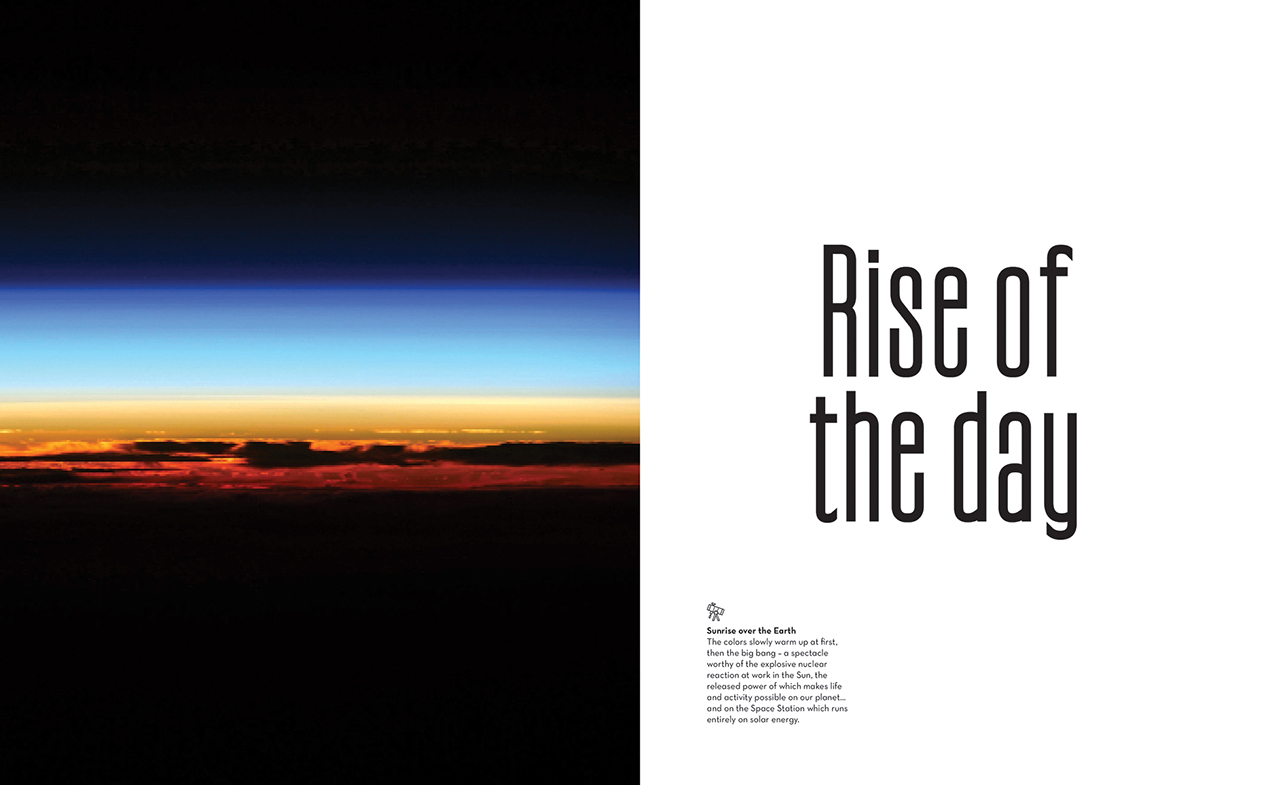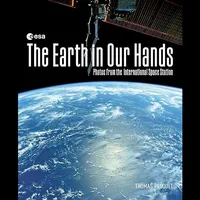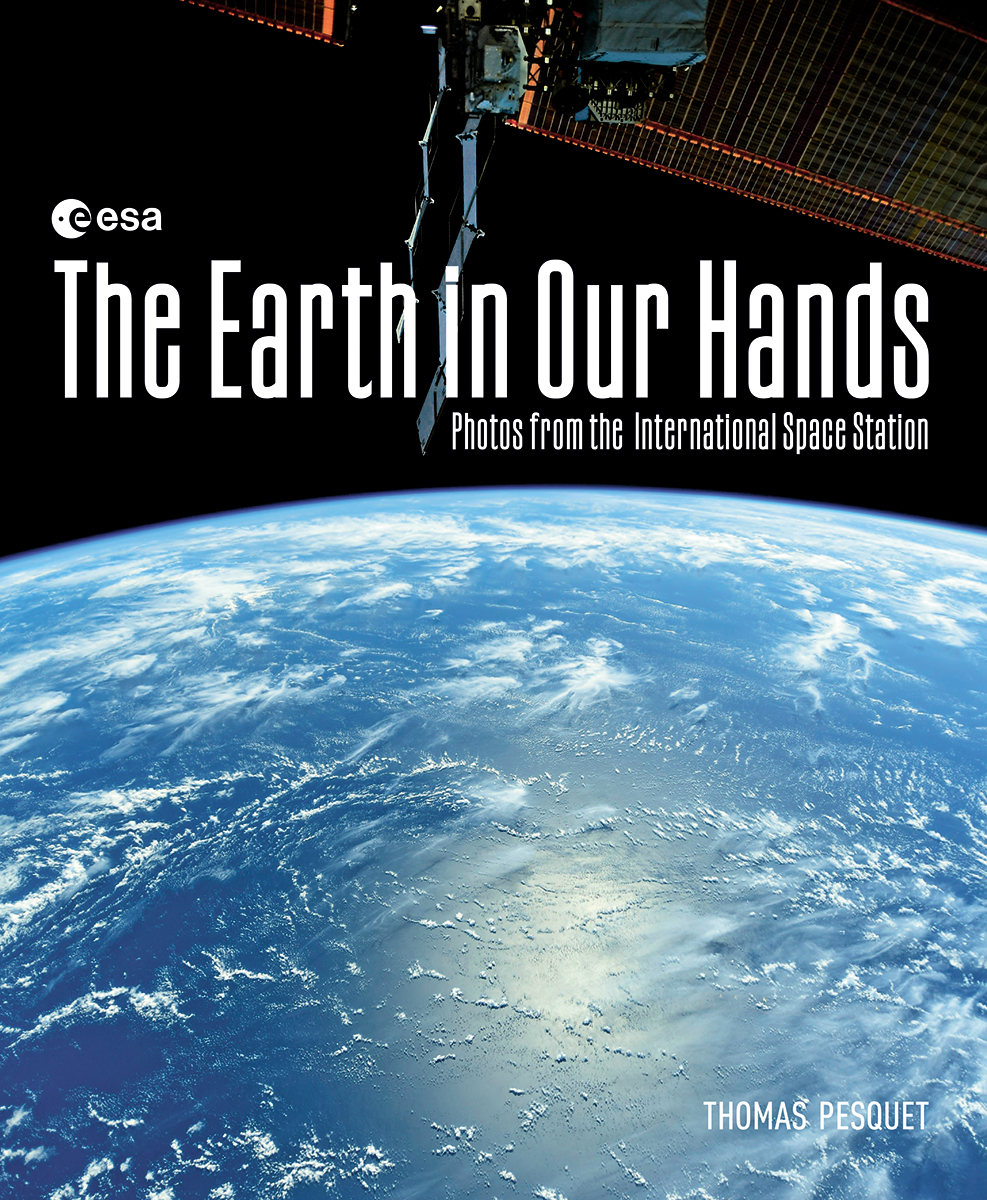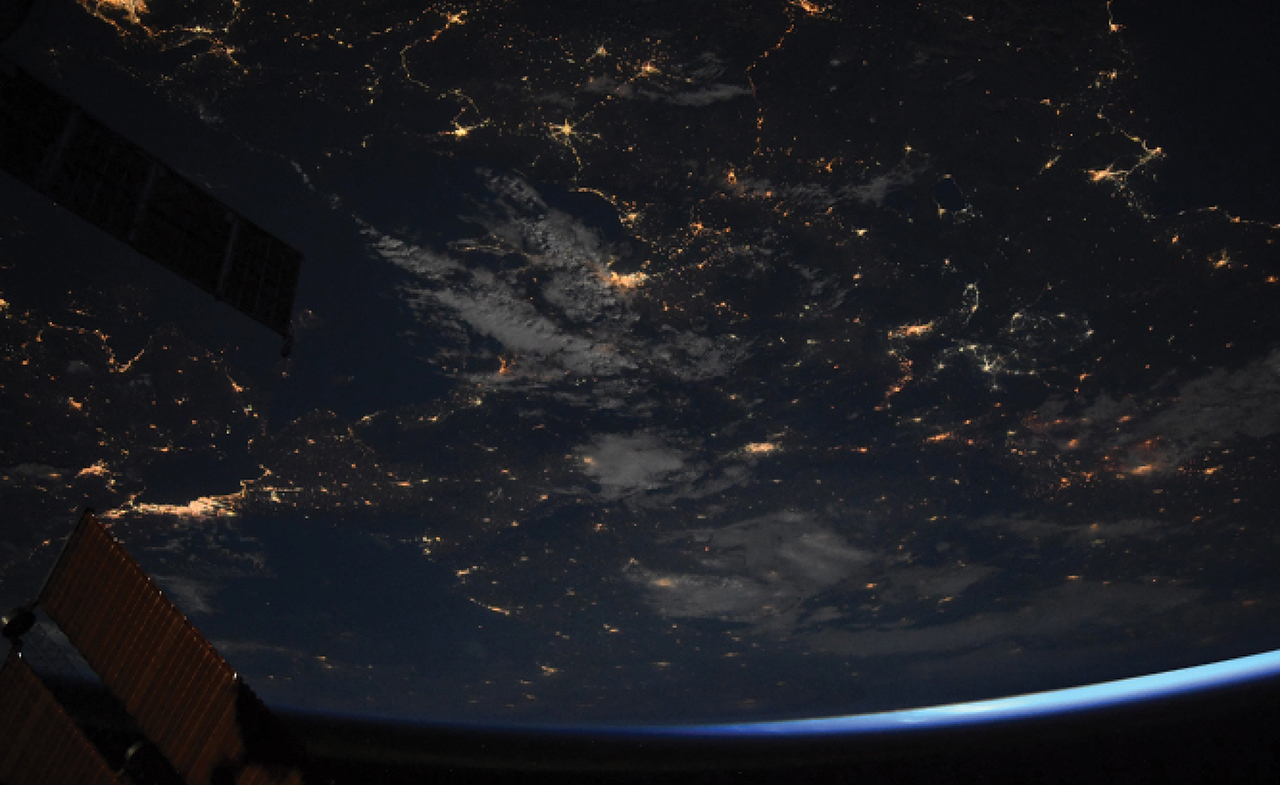How astronaut Thomas Pesquet captured the planet in 'The Earth in Our Hands'
"The blue of Earth is not only a color, it's also a light — it actually glows."

Flipping through his new book of more than 200 photographs of Earth, or, if you are determined, the more than 245,000 images he took during his second mission aboard the International Space Station, you get the sense that Thomas Pesquet thoroughly captured the planet.
In "The Earth in Our Hands: Photos from the International Space Station," Pesquet, a French astronaut with the European Space Agency (ESA), curates his favorite views of our home world, showcasing its varied landscapes of both natural and human-made features. With a familiarity that only an astronaut can gain while looking down at Earth for hundreds of days, Pesquet not only conveys the beauty of Earth, but its fragility and the toll climate change has had on our environment.
But as complete a portrait of Earth as Pesquet was able to capture, there was one target that, try as he might, escaped his camera. "Machu Picchu was one that I always wanted to take but never managed," Pesquet, referring to the remains of the 15th-century Inca citadel in southern Peru, said in an interview with collectSPACE.com. "I don't think there are many pictures of Machu Picchu because it is really small, the environment is very green and there are always clouds around, so you have to be really lucky and really good with the long lenses to get Machu Picchu."
"Maybe next time," he said.
Related: French Astronaut Thomas Pesquet's Amazing Photos from Space (Gallery)
The Earth in Our Hands: Photos from the International Space Station: $34.24 at Amazon
The Earth in Our Hands offers full-color photos from astronaut Thomas Pesquet taken during his time on the International Space Station. From his vantage point in low Earth orbit, Pesquet was able to capture the Earth and the space around it in stunning detail.
collectSPACE spoke with Pesquet about the challenges of photographing Earth from space, the psychological importance to being able to see our planet out the window and how he selected the photos for "The Earth in Our Hands," now in stores from Firefly Books.
This interview has been edited for length and clarity.
collectSPACE (cS): What would you say separates "The Earth in Our Hands" from other astronauts' collections of Earth photography, such as Terry Virts' "View From Above" or Don Pettit's "Spacebourne"?
Thomas Pesquet: I'm familiar with their work, especially Don Pettit's, Don is the one who actually (re-)invented space photography, almost. Their books were an inspiration. For some of my shots, I started from what Don was doing and then I tried to give it a personal take.
I think the biggest difference is probably night pictures. Those other guys did some night pictures, but mostly shot in the day, I think. I did a lot of night pictures, which I really enjoyed, starting from time lapses and extracting some really nice frames. So I think my book maybe has more night pictures.
Also, one thing that I did that I think none of those other guys did is photo collages. Instead of taking just one shot [of a target]. I took hundreds of shots as the ISS flew over and then I stitched them back together. It's computer assisted, but I stitched them together to give me the highest magnitude over a very wide area. So I could map the whole city of Los Angeles or the whole state of New York, which does not fit in just one shot at that high a magnitude.
I ended up needing NASA's help. Those guys [on the ground] were sometimes the ones stitching the pictures back together because we don't have the computing power up there on the space station, nor the software. But I think that's something that sets my photography apart.

cS: How did you go about culling 200 of your favorite photos from among the more than 245,000 you took during your second mission?
Pesquet: I did the work during the mission.
So, for example, given the inclination of the orbital plane, there is this one really good pass when you go diagonally from northwest to southeast across France. along Italy, through the Mediterranean along the Red Sea. This is a goldmine [for photography]; there's everything in that orbit, at least for a European.
On a day, some Sunday afternoon, when you get such an orbit, you end up with possibly 10 SD cards with 200 to 400 pictures on each and then you have to sort through them. If you postpone everything until after the mission, then you'll never do it because there's just way too many pictures and that's way too much work.
So every evening, I would go through my SD cards, downlinking everything to NASA like you're supposed to, but then hand picking the pictures I liked to save for myself on my ISS laptop. And then on the ground after the mission, I uploaded everything to Flickr, organizing albums geographically like North America, South America, Europe, Africa, etc., or night pictures or EVA [extravehicular activity or spacewalk] pictures and then I tried to tag them all, which was also a lot of work, but then only 4,000 to 5,000 pictures made the cut.
So when we sat down and selected the pictures to create the book, we started from my Flickr account where the pictures are nicely sorted out and that was a huge help. For the few pictures that were missing or when we needed the highest resolution, then I wrote to the the imagery folks at Johnson Space Center in Houston and they were always so great, sending me back exactly what I wanted.
cS: How far apart would you say is the experience of seeing Earth on the pages of your book, as compared to seeing it out the window of the space station's cupola?
Pesquet: There's something that cannot be captured [by the camera]. The way sometimes I've tried to explain it is the blue of Earth is not only a color, it's also a light — it actually glows. And that's really what it is; it's just a reflection of the sunlight. But it glows a bit like a Bluetooth LED, which is blue, but that is a very weak comparison.
So everything is a little bit like that and it's hard to capture in a picture. Night photography is especially hard because you see stars and auroras and then when you click on your digital camera, which are only as good as their sensors, more often than not you got a black or mostly black frame with only some hint of the real color. It takes a lot of tampering with the camera's settings to actually get a decent picture of an aurora or sights like that.
It's also a matter of investing your time and hard work. If you look at the pictures from the beginning of my first mission, they're horrible. And then they get slightly better over the course of my first mission and I picked up where I left off on the second mission. I only like the pictures from the end of my second mission, which is after 400 days in space taking pictures. I only then finally got to kind of like the pictures I took.
Breaking space news, the latest updates on rocket launches, skywatching events and more!
So I would say with hard work, good cameras and also some post processing, because the pictures you get, they are a bit hazy. There's a grayish tint to the atmosphere and you eyes don't really see that but the camera captures it. So the colors are less flamboyant, less contrasted then they are in real life. So it takes a little bit of adjusting your pictures [to match what you see].
If you do those three things right, which we tried to do in the book, then I would say you're only missing 10 percent. But if you just click a picture out the window and then post it on social media without anything, it is going to be gray, the colors are going to be horrible and then you're missing at least 50 percent of what your eyes actually did see.
cS: From what you write in the book and how you you talk about Earth photography, there is a sense that having the ability to look out the window at our home world is an important factor, psychologically, for being able to stay in space for long durations. On a trip to Mars, however, there's going to be a large swath of time where Earth is going to be too small to see and all you are going to have is the blackness of space out the window. How hard do you think that is going to be if you don't have Earth photography as a pastime to fill the months it is going to take to get to Mars?
Pesquet: I think it's gonna be super hard honestly.
The trip is going to be uncomfortable. It's not going to be the ISS flying to Mars, it is going to be a much smaller volume. I usually call it, and it's not exactly accurate, but it's 500 days in a Fiat 500.
It's also going to be challenging because you will have to keep busy, right? If you are not busy with work or photography or whatever, then you start thinking about your family. You start thinking about what you're missing. I've seen it happen.
There was a Progress launch mishap just after our Soyuz launch on my first mission. The Progress blew up, so my Russian colleagues they didn't have all of the cargo, all of the science experiments and everything that they needed to follow at work. So for a few weeks, their workload was actually really low, or much lower than what it usually is, and those guys were taking naps, watching movies and things like that and they hated it. That's when they began to speak about their families and we saw how they missed them.
So do you don't want that on a mission to Mars
The view of Earth, which is more specific to the question, is, at the same time, I think psychologically reassuring. It's home. It's where everybody is that you know, where your friends and families are, but it is also about safety, right? We on the ISS, even though we are really super high, 400 and some kilometers, we are still very close to Earth. If something goes wrong, you can come back down.
When I saw the pictures from the Artemis I mission behind the moon, with the capsule in the foreground and the moon a few dozen thousand kilometers underneath and then Earth like 384,000 kilometers [240,000 miles] behind it as a really tiny ball, I was thinking, "Wow, there's a good amount of risk involved." Because if something goes wrong, your navigation system better be working, your propulsion system better be working because you're not going to glide all the way back to the planet.
So I think, "Now we're in deep waters." Now whatever happens, whether it is days or weeks or months from a return, it's going to be something to deal with. Those guys and ladies who we send to Mars, they're going to need to be psychologically strong. They will be busy. We'll figure out a way, but it's going be a different kind of animal from just flying on the ISS.
cS: So with in mind, do you want to be in a position to write a sequel to "The Earth in Our Hands"? Maybe something like, "The Moon Beneath Our Feet: Photos from the Lunar Gateway"?
Pesquet: I would love to do that, absolutely. I think for the moon, though, it will be mostly black and white. I have to up my black and white game. I tried to take some black and white shots on the ISS, but I think Earth is so beautiful and so colorful, it's actually a shame to take black and white pictures of the planet.
But yeah, we are so lucky to live in an age when there's an Artemis program and we are going and Europe is part of it. Hopefully, European astronauts — fingers crossed — but maybe it's not me, who knows? There's a handful of candidates right now. But yeah, before 2030 hopefully one of us is going to be on the surface of the moon.
And now photography is part of the job. That's the way I see it. You have to share your view, you have to bring back some pictures. It's like the internet, if there are no pictures, it doesn't exist and it does exist so we need to bring back some good pictures.
I've actually done three weeks of [lunar] geology training, the last one of which in Lanzarote, which is a volcanic island. It looks like the moon on Mars with very barren landscapes. If you squint your eyes, you think you're on the moon. I got to play with the camera that NASA is planning to equip crews who will step on the moon. It's digital camera-based, but its frame, some of its buttons and its firmware have been upgraded to make it usable with pressurized gloves on the moon.
It was exciting to give my feedback as an ISS Sunday photographer and to get my hands on the camera, walk around and picture myself on the moon. Hopefully it happens one day, but if I am not going, somebody better bring home some good pictures so that I can feel like I was there, too.
Follow collectSPACE.com on Facebook and on Twitter at @collectSPACE. Copyright 2023 collectSPACE.com. All rights reserved.

Robert Pearlman is a space historian, journalist and the founder and editor of collectSPACE.com, a daily news publication and community devoted to space history with a particular focus on how and where space exploration intersects with pop culture. Pearlman is also a contributing writer for Space.com and co-author of "Space Stations: The Art, Science, and Reality of Working in Space” published by Smithsonian Books in 2018.
In 2009, he was inducted into the U.S. Space Camp Hall of Fame in Huntsville, Alabama. In 2021, he was honored by the American Astronautical Society with the Ordway Award for Sustained Excellence in Spaceflight History. In 2023, the National Space Club Florida Committee recognized Pearlman with the Kolcum News and Communications Award for excellence in telling the space story along the Space Coast and throughout the world.





